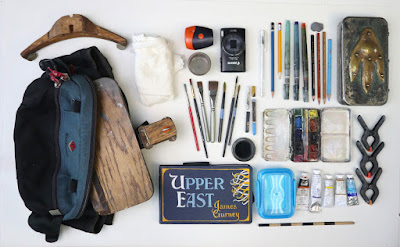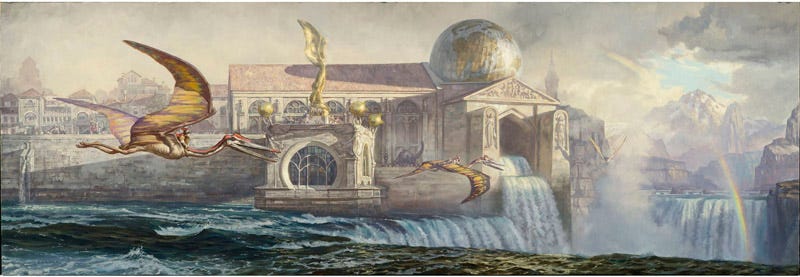
Joseph (who calls himself Sansu the Cat) had some questions for me:
What do you think it is about dinosaurs that excites our imagination, especially while we are young?
What I love most about dinosaurs is the constantly unfolding revelations about them. New forms are discovered, and new theories emerge about their life and death. Of course that means I have to wince a bit when I look back at the way I portrayed them in my paintings from 20 or 30 years ago, but the more we learn about them the more amazing they become.

2. What impresses me a great deal about the Dinotopia series is the attention to scientific detail and plausibility. What role has science had in shaping Dinotopia?
The very earliest inklings of the idea came from brainstorm sessions with archaeologists on National Geographic expeditions and with paleontologists from the Smithsonian. Throughout the process of world-building I consulted with scientists to help me with the outward form of the dinosaurs. When it came to the more speculative elements of the story, such as saurian writing systems, I was surprised how most scientists were interested in contributing science fiction ideas. I realized most scientists start out as science fiction buffs, and many of them remain fans.
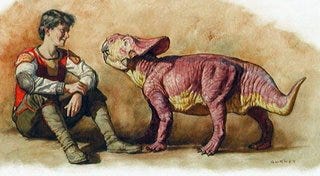 |
| Will Denison and Ambassador Bix. |
Most of those characters are based on real people, or combinations of real people, and I then try to focus their personalities. Lee Crabb is based on an art teacher friend of mine who is a rugged, physical guy, very sweet natured, but he likes to pretend to be Crabb. Oriana is based on a friend of mine who taught art to sixth graders, and she said her students got a big kick out of seeing her appear in the book. Bix is a combination of my chihuahua, my grandmother, and the Dalai Lama.
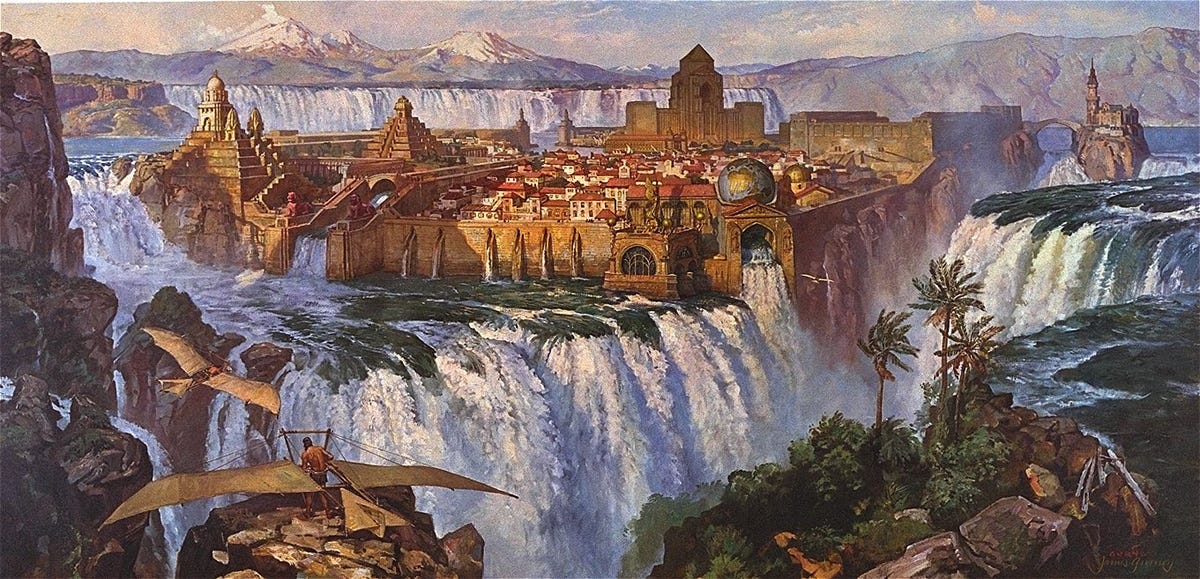 |
| “Waterfall City” by James Gurney. |
I first painted a city built on a waterfall around 1981, and again in 1988. That panoramic painting was the first image that ultimately became a part of the first book Dinotopia: A Land Apart from Time. The city is a combination of Italian hill towns which I saw while on assignment with National Geographic, together with Niagara Falls, which I painted from Goat Island before undertaking the big painting.
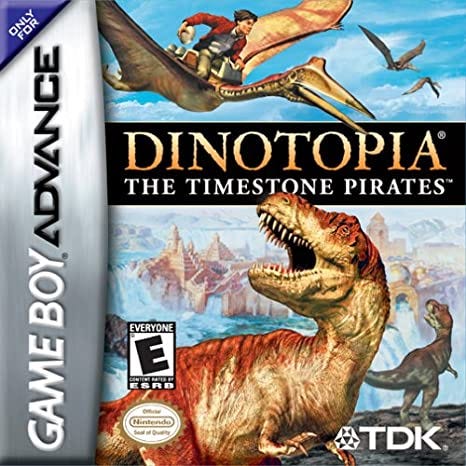
5. When I was a kid, I enjoyed playing Dinotopia: The Timestone Pirates for the GameBoy Advance. To what extent were you involved in the game, and do you have any fond memories of it?
I love the job the developers did in translating Dinotopia into a GameBoy platform-jumper. Although I wasn’t directly involved in creating that game, its development came at a good time because my own two sons were heavily into GBA at that time.
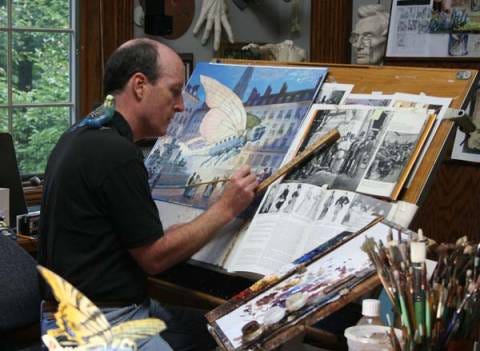
6. Nowadays you have also been sharing your passion for painting on your blog as well as through YouTube videos. How has your experience been interacting with fellow artists through the Internet?
I like interacting with other artists through the Internet, and I get a lot out of creating posts and videos for Instagram, Blogger, and YouTube.
There are at least four reasons:
- It provides a good excuse for learning. Explaining or demonstrating some aspect of your art life forces you to understand it, and you learn even more from the feedback.
- It helps me as a writer. I find out right away if a topic is controversial, confusing, electrifying, or boring.
- It builds a following. People who follow any artist’s artwork want to hear what went into making it. They feel a sense of belonging to your next project if I include them in its creation.
- We all benefit from sharing. The Internet at its best is about sharing, and it has fostered a spirit of openness that has never existed before in the history of art.
7. One of my favorite sayings in Dinotopia is “breathe deep, seek peace,” which I see as a good practice that we can all use when confronted in moments of conflict. Do you any words of wisdom to offer for those of us who are still seeking peace in our own lives?
The world is always in need of a vision of people getting along and working things out, both with each other and with the natural world. We’re always going to be a work in progress, but we’ve got to remember that we’re all in this together. Hopefully good things will emerge from times of stress, both in our personal lives and the world around us. The best way to eliminate worry for me is to remember that the things I have worried about the most never came to pass, and the bad things that happened have usually been unanticipated. So all we can do is try to fix things, grow things, and encourage people to find common cause.
----
First published in Medium
Get Dinotopia signed by me from my website



























